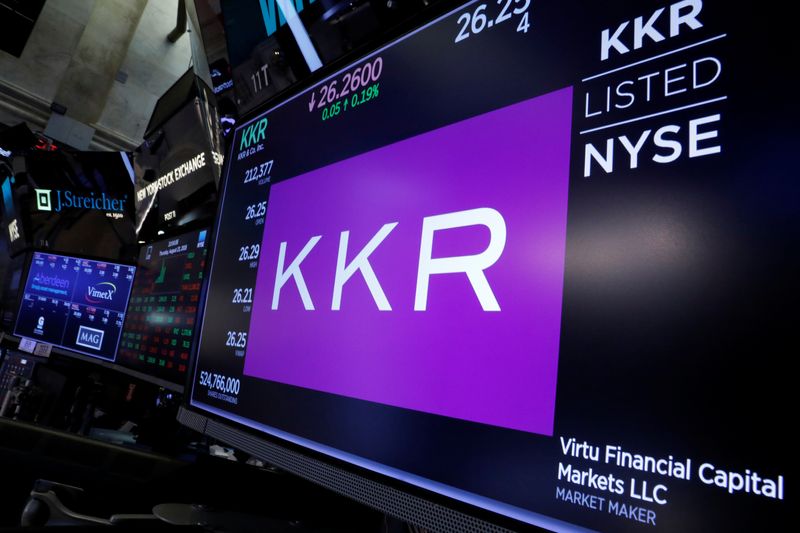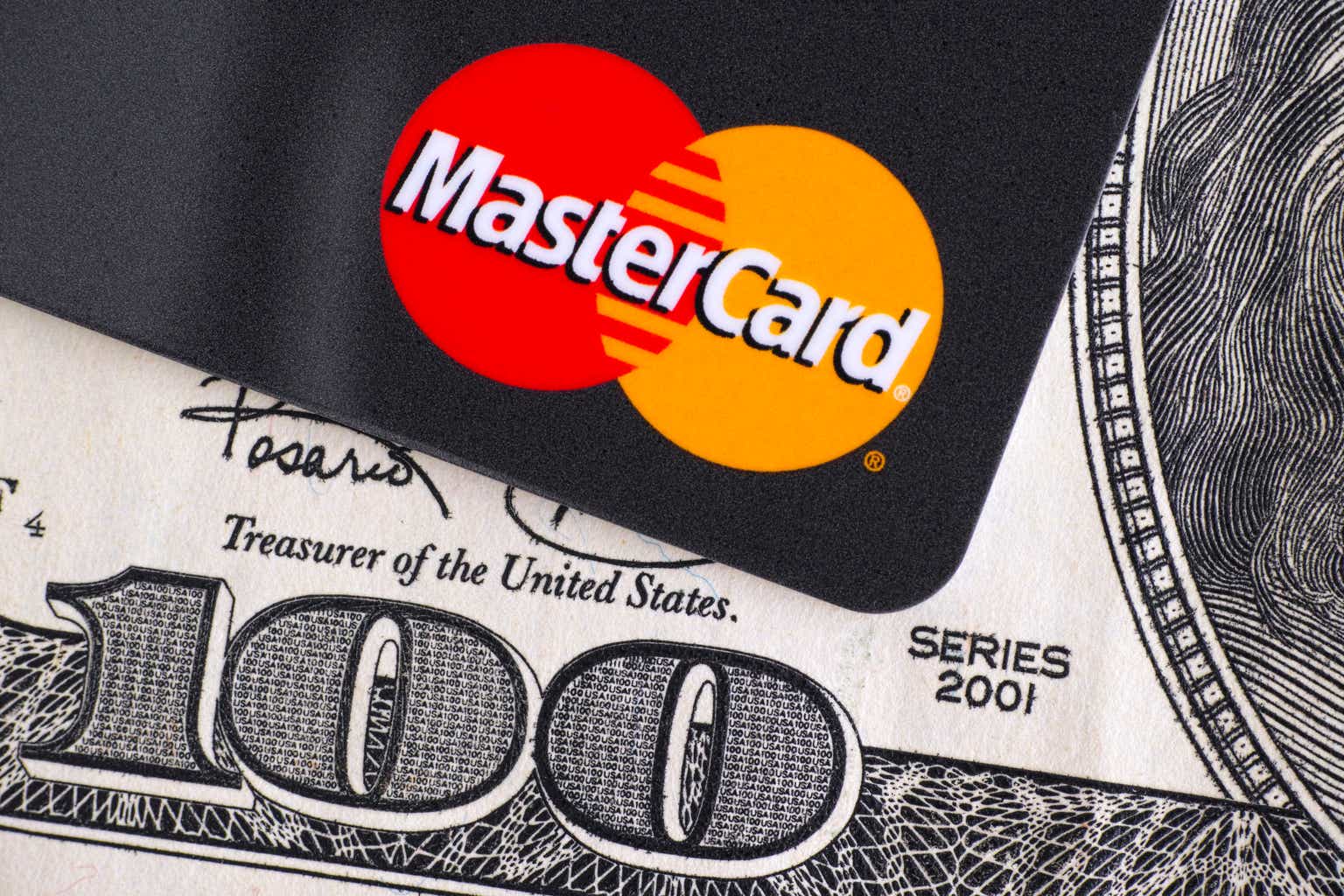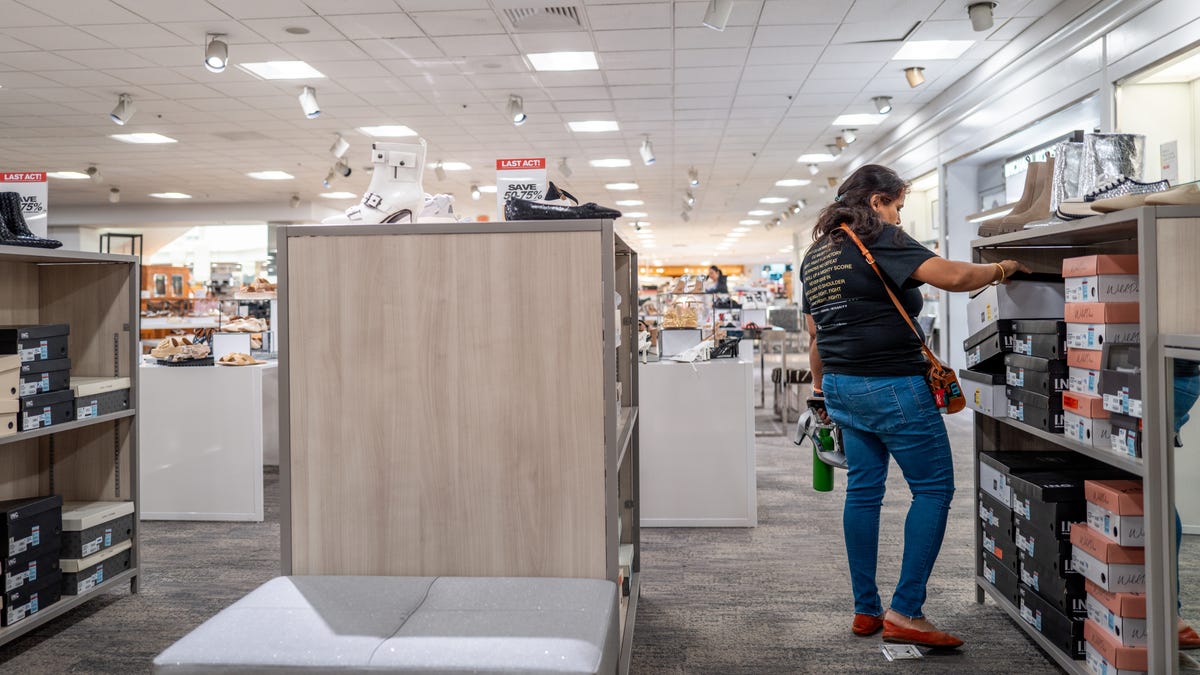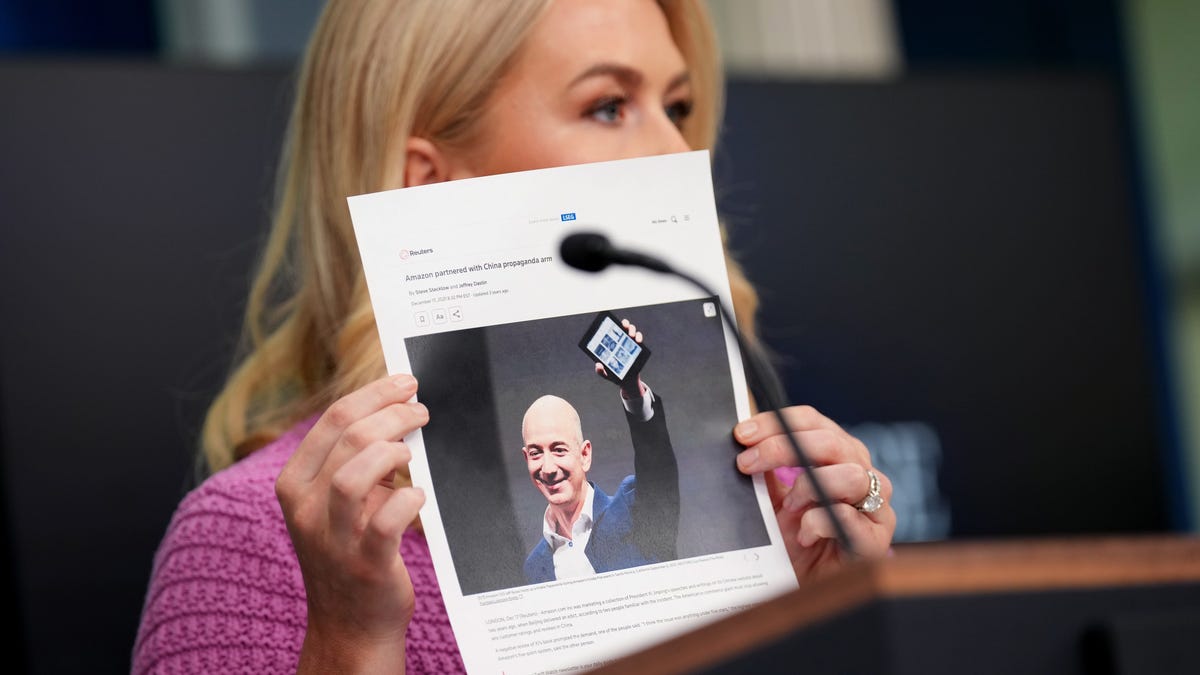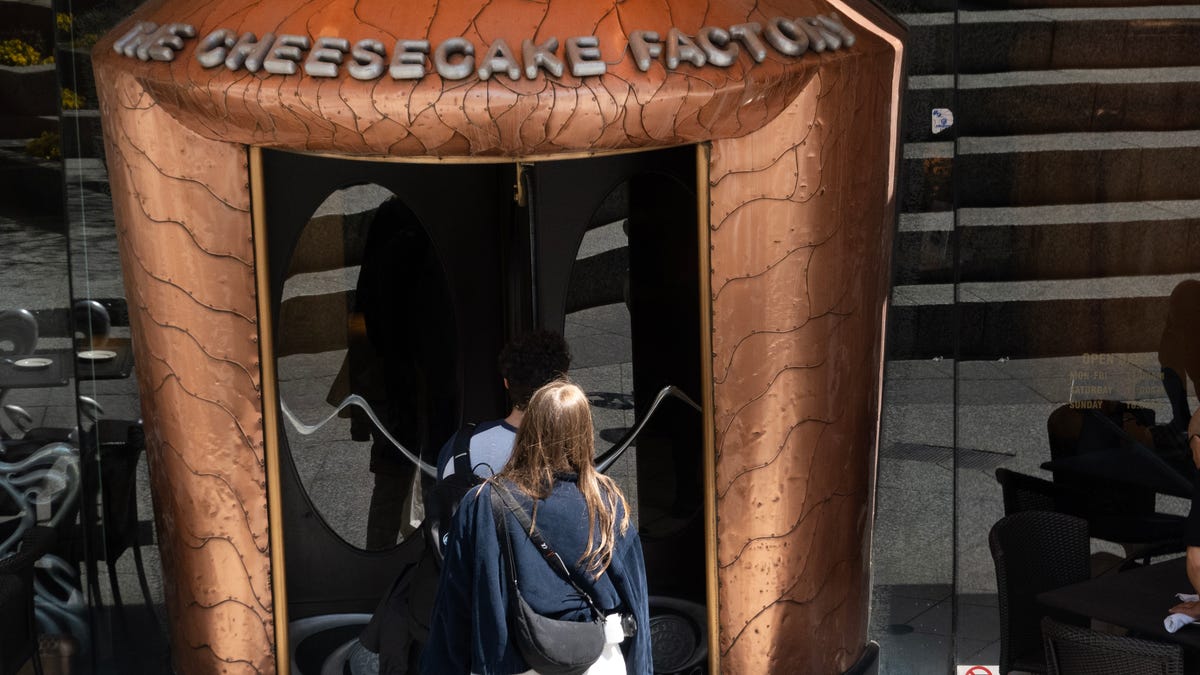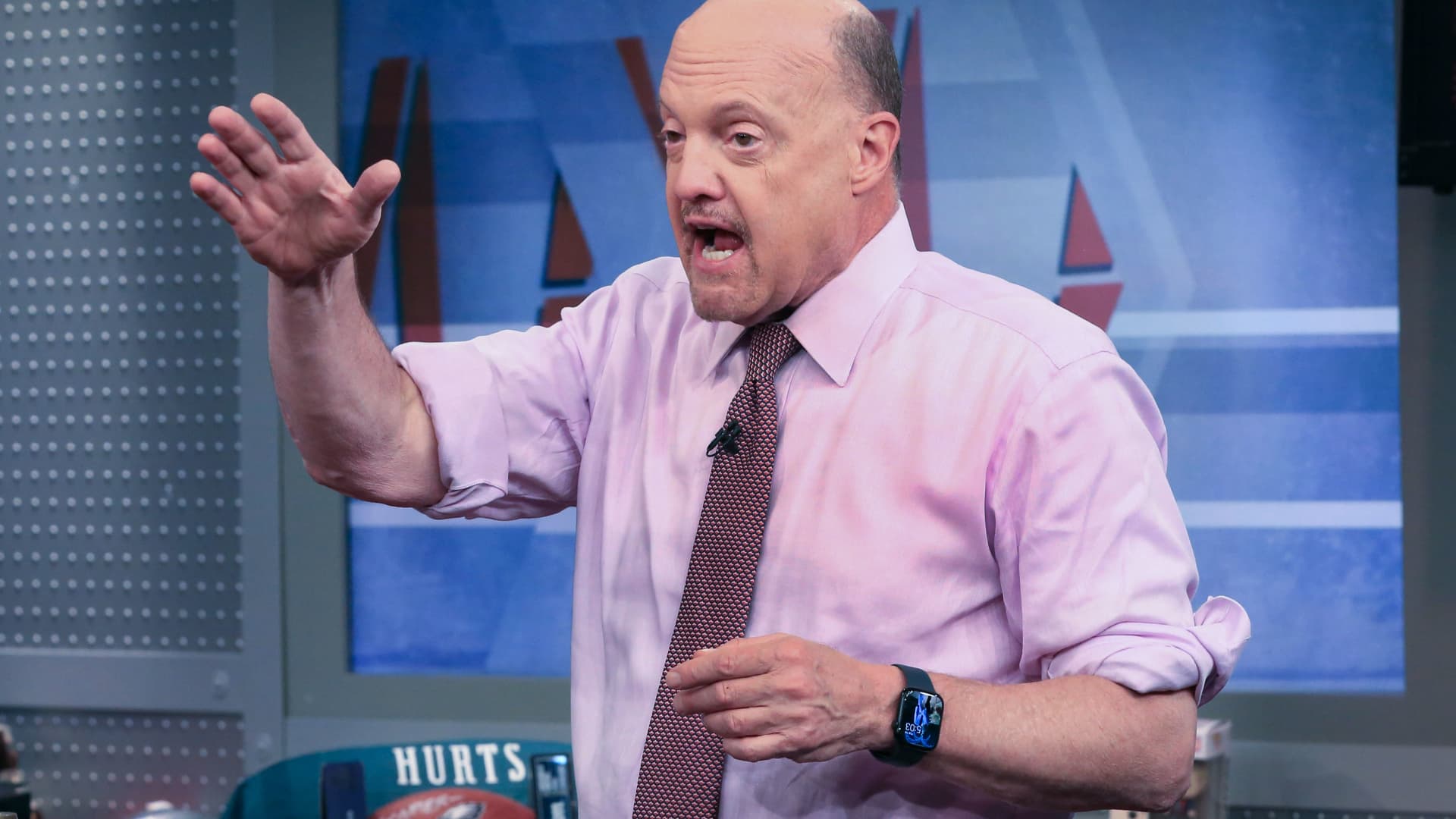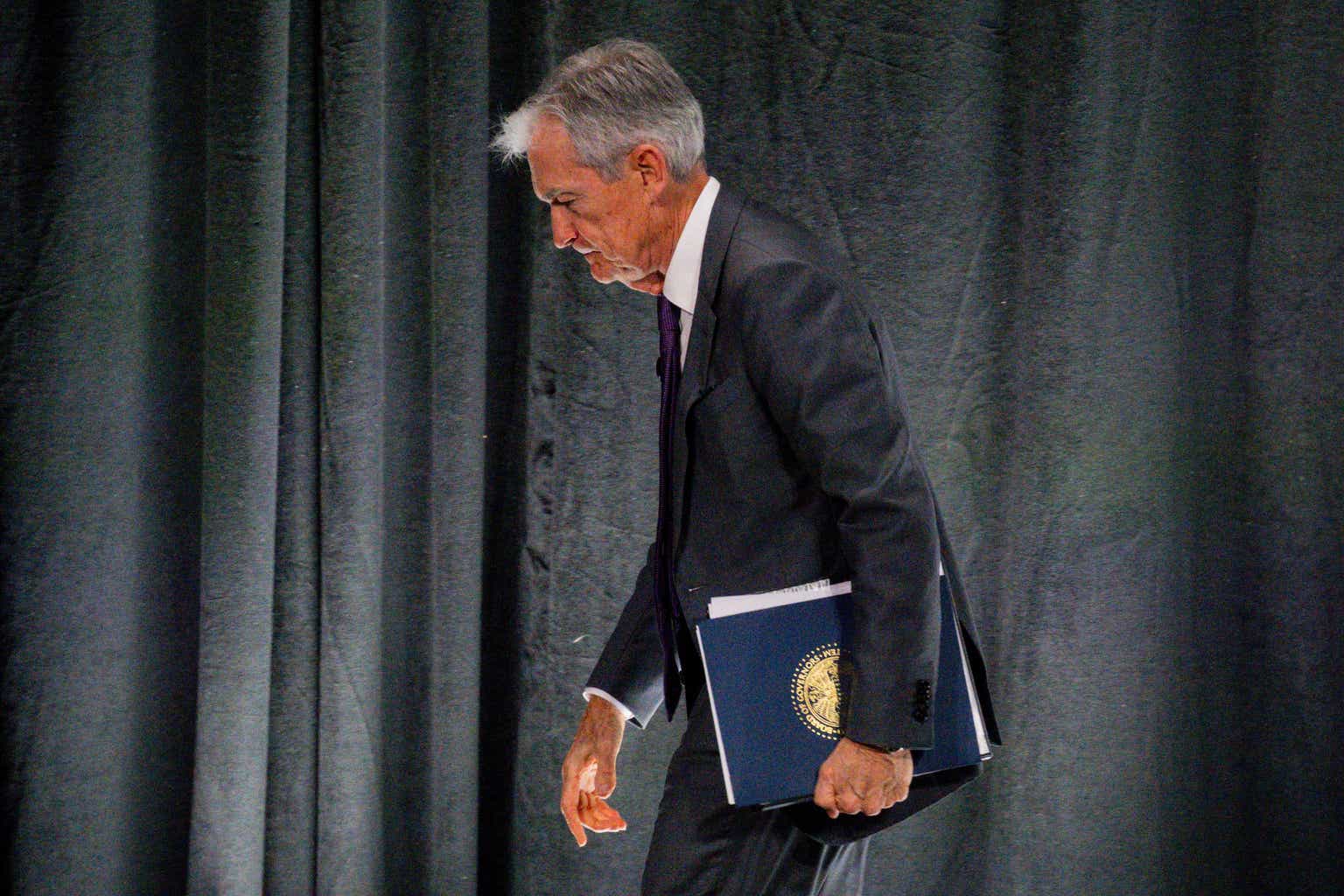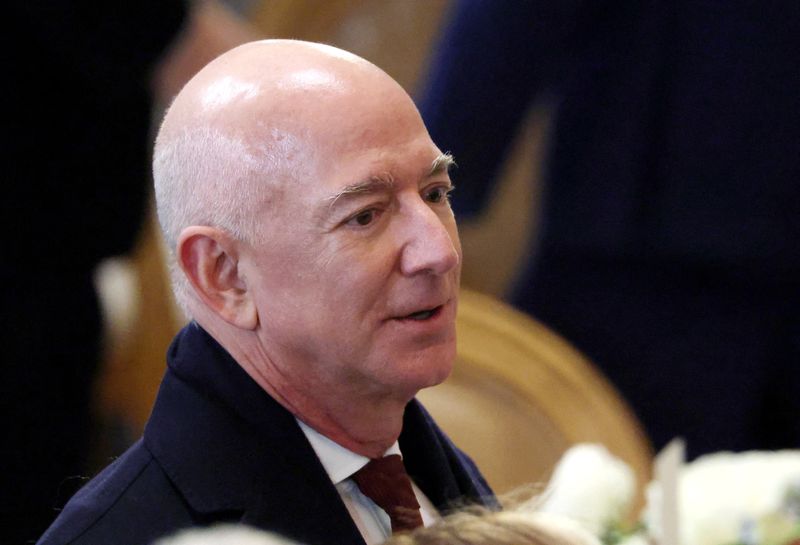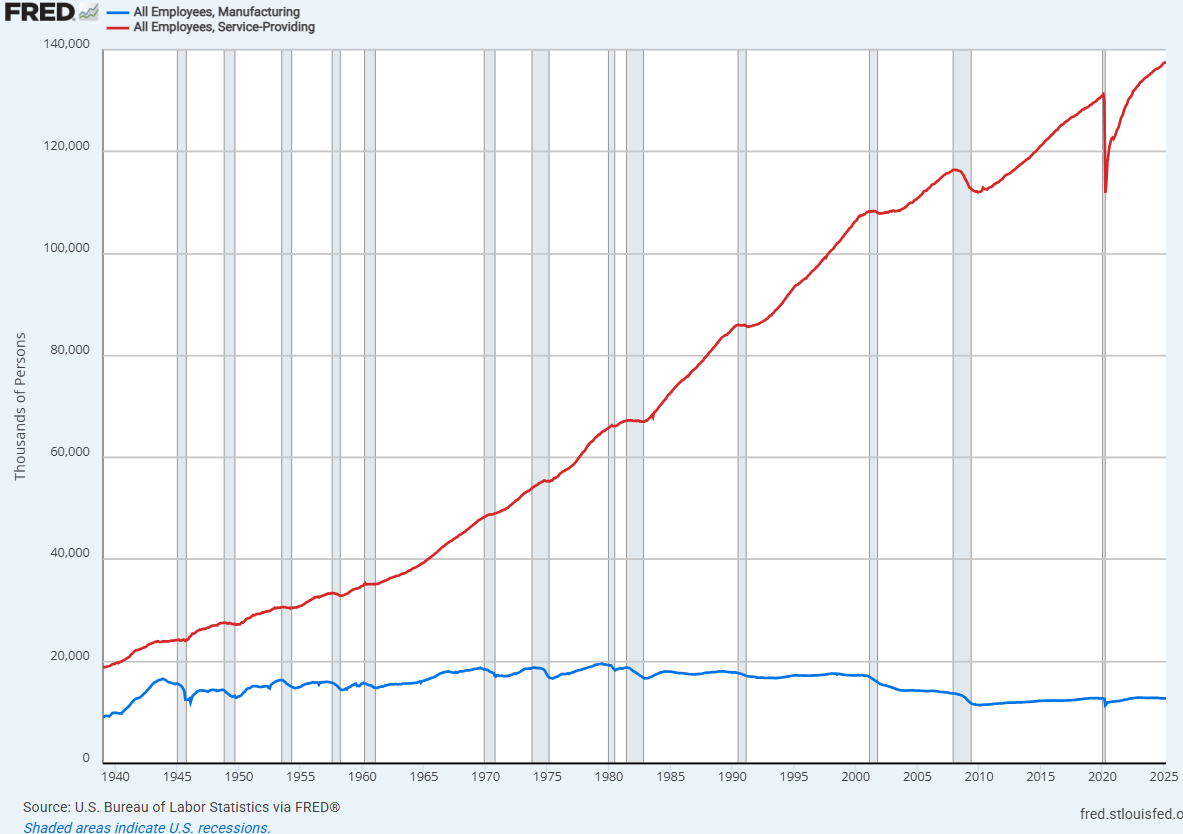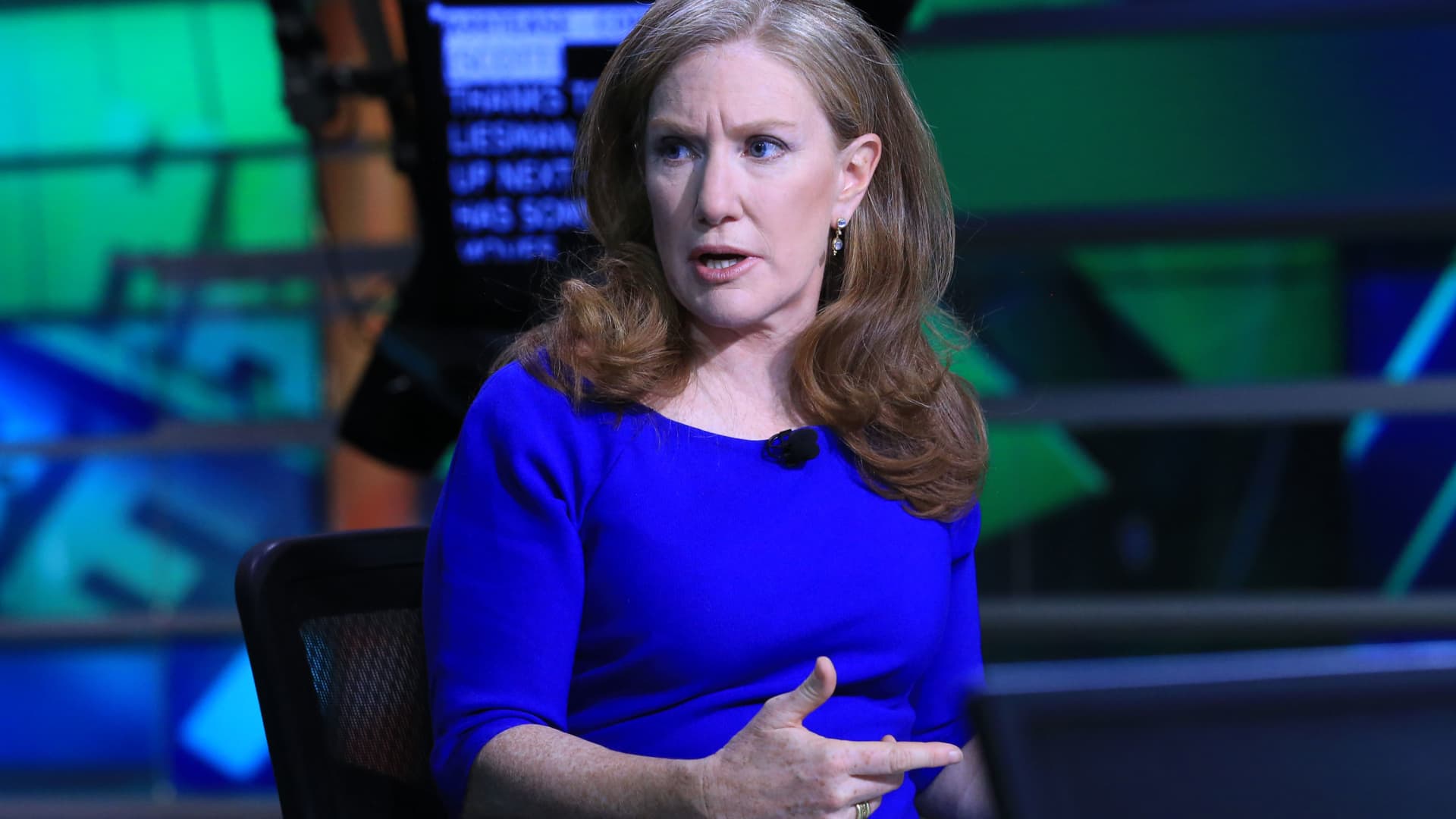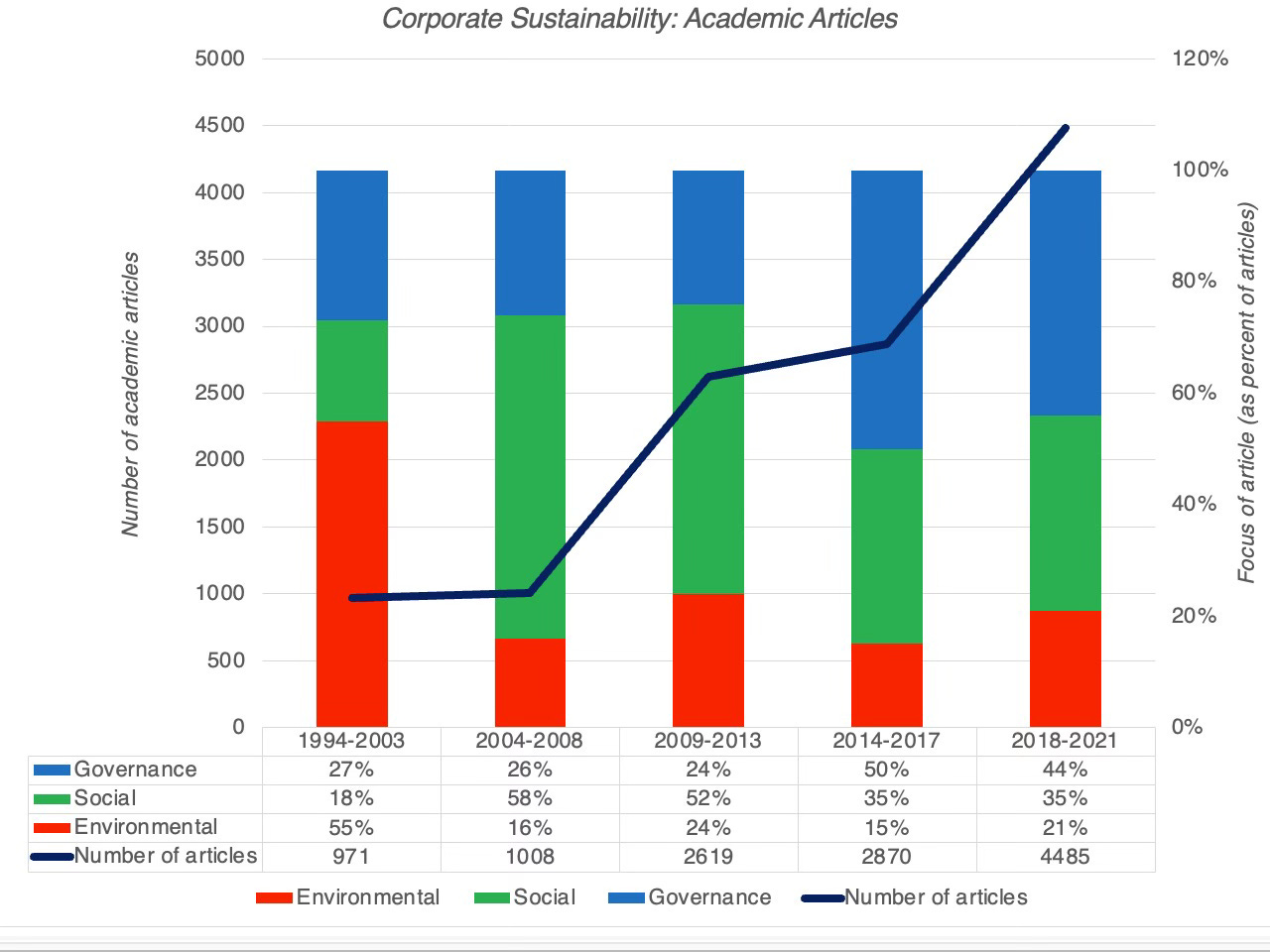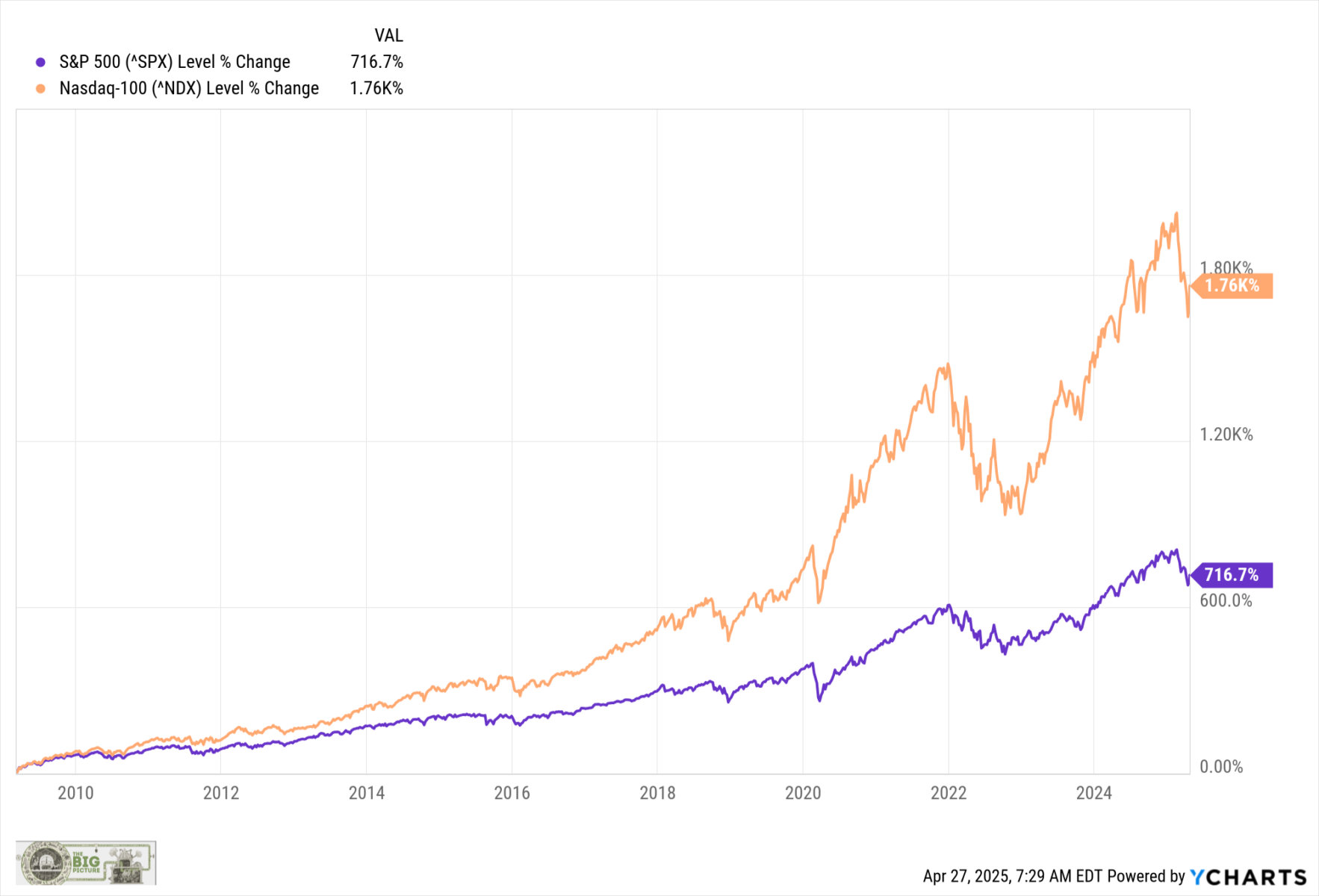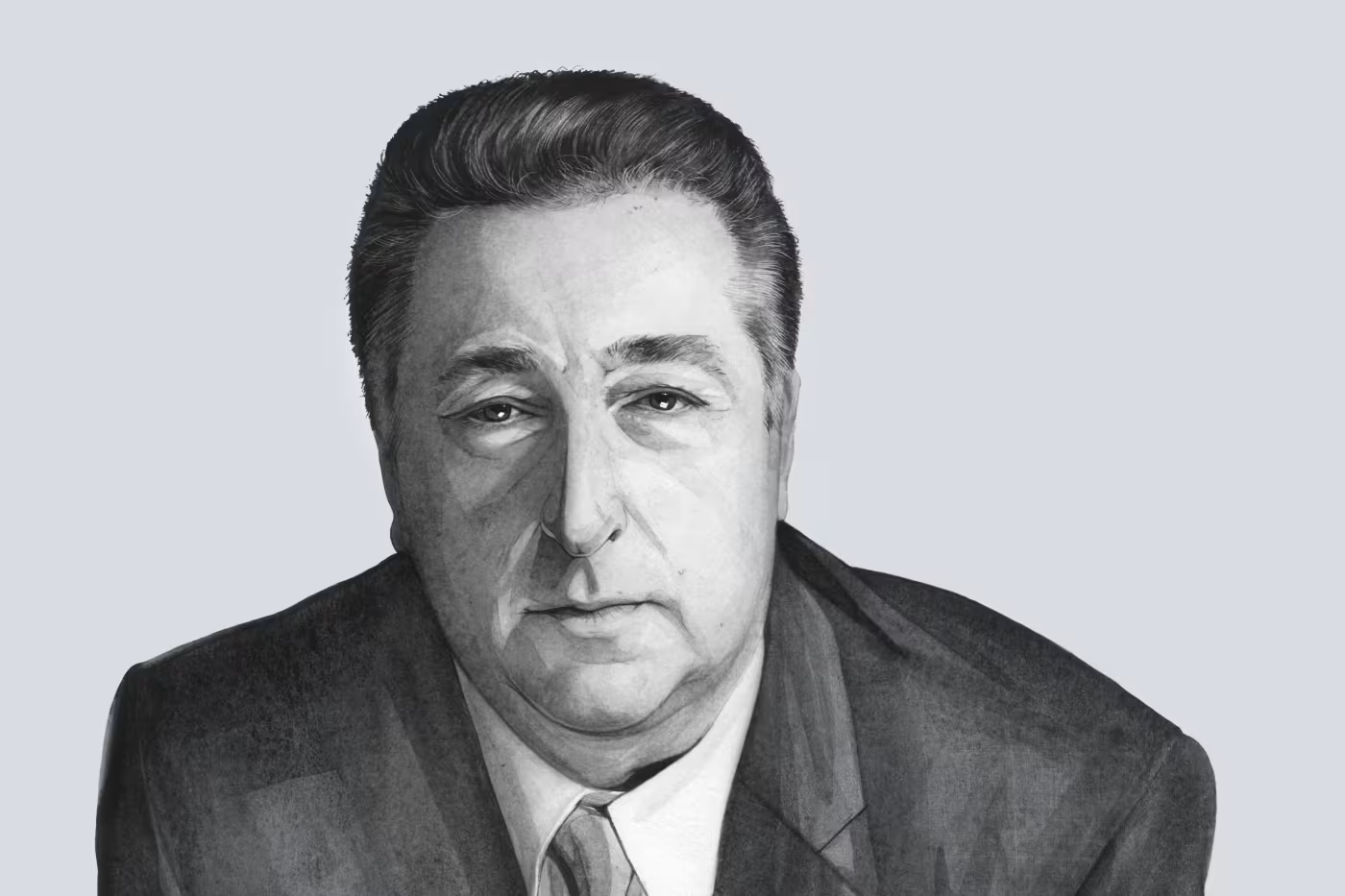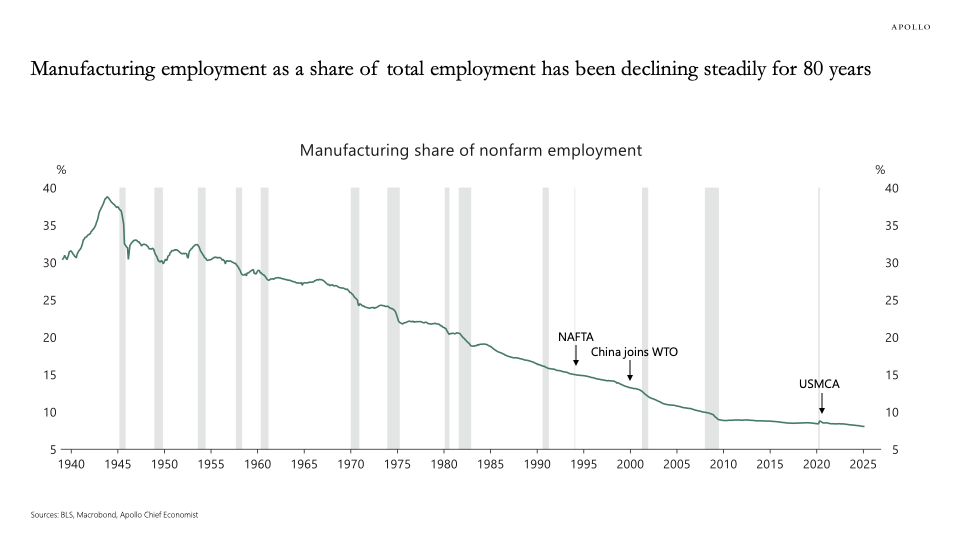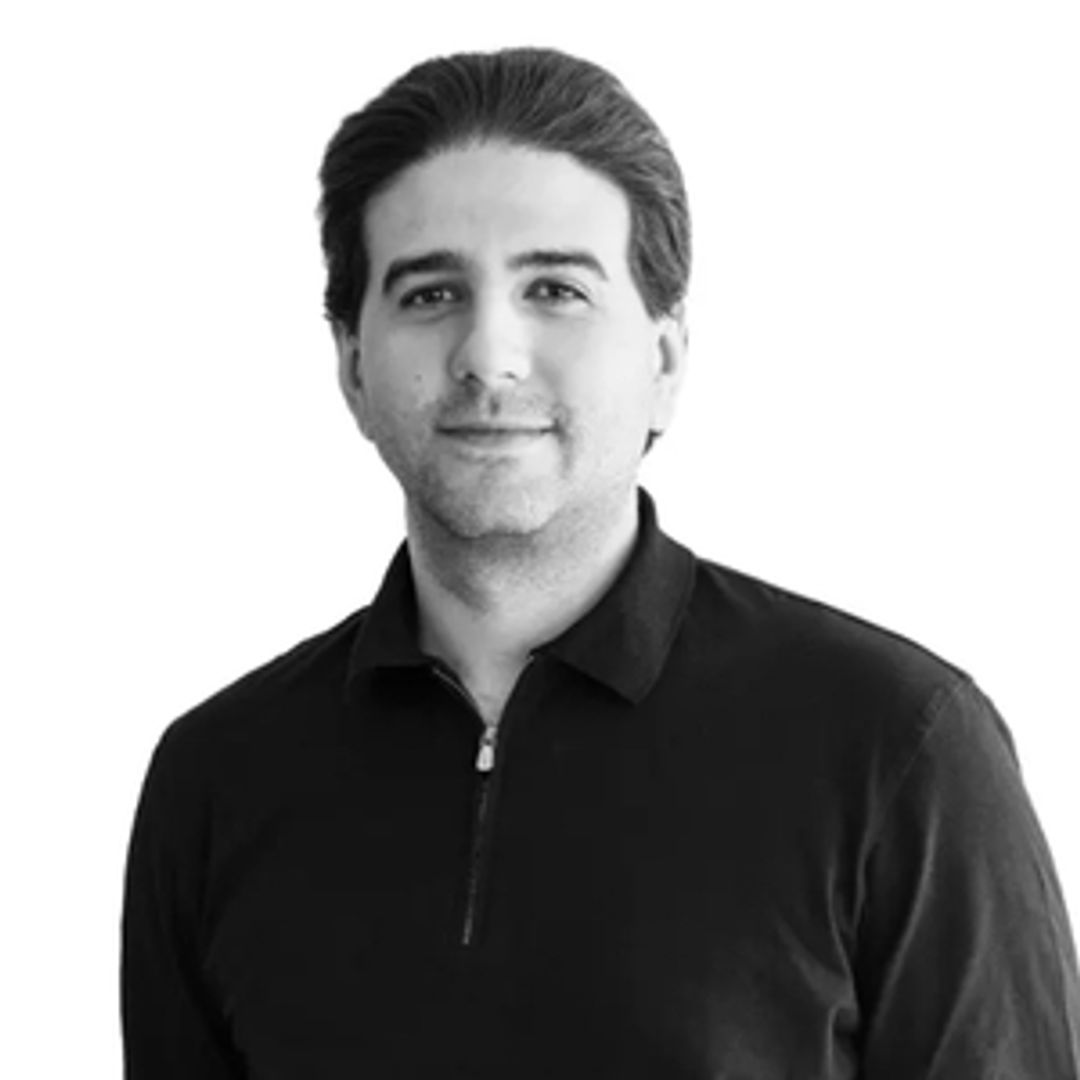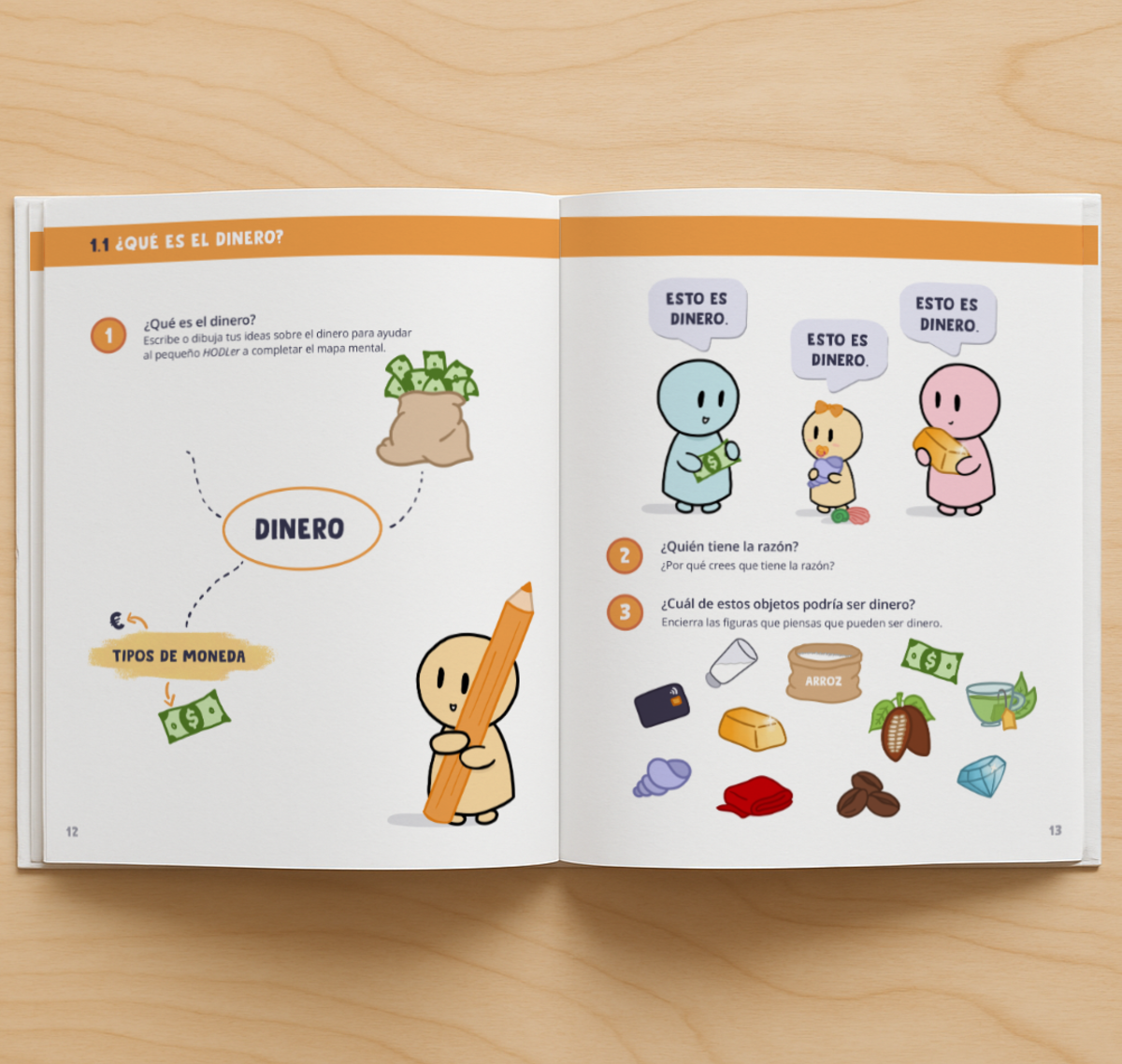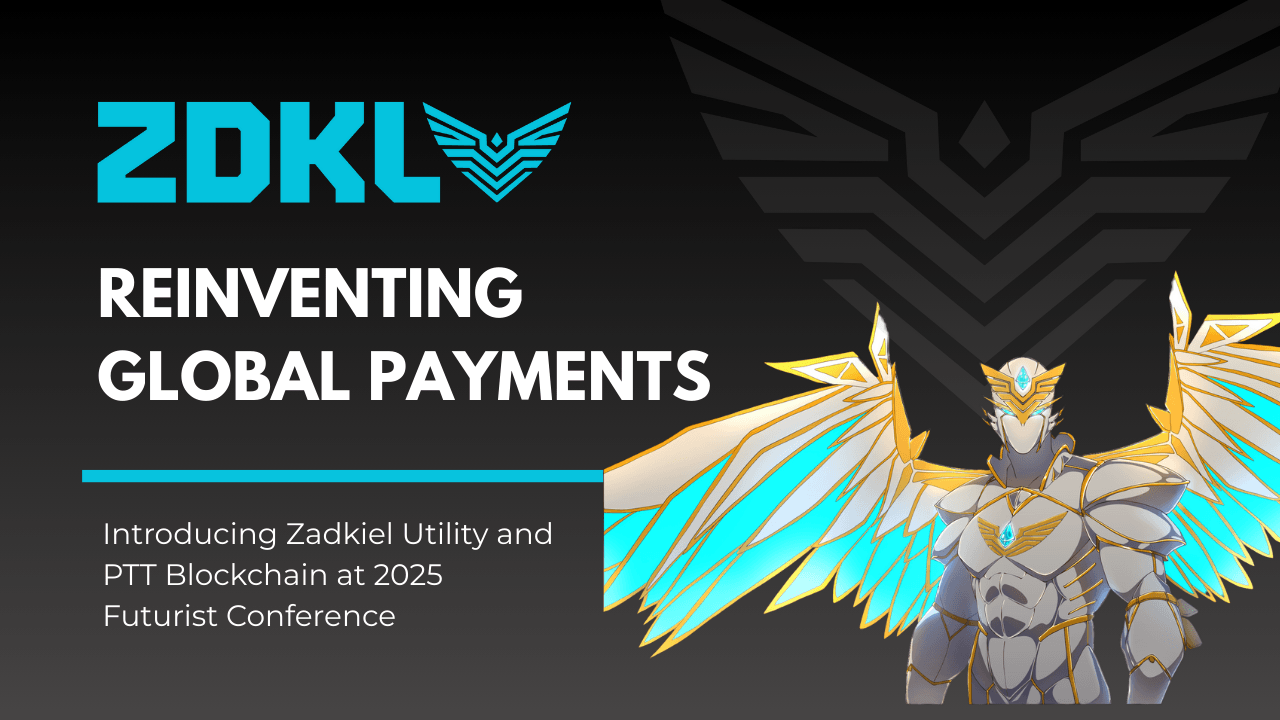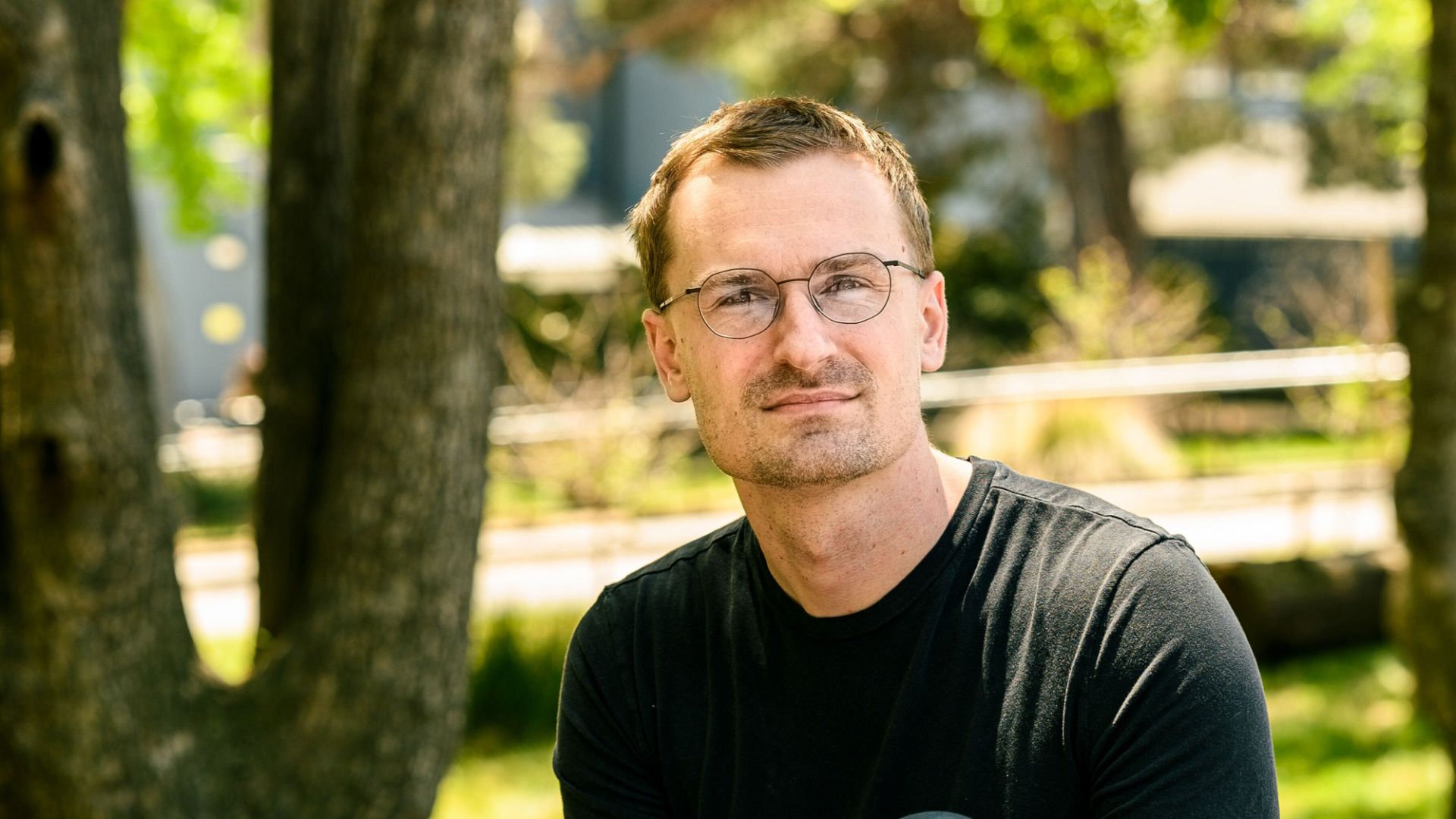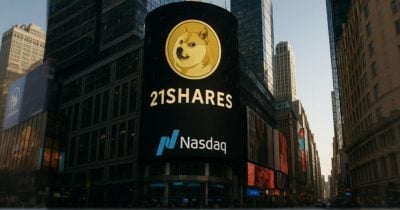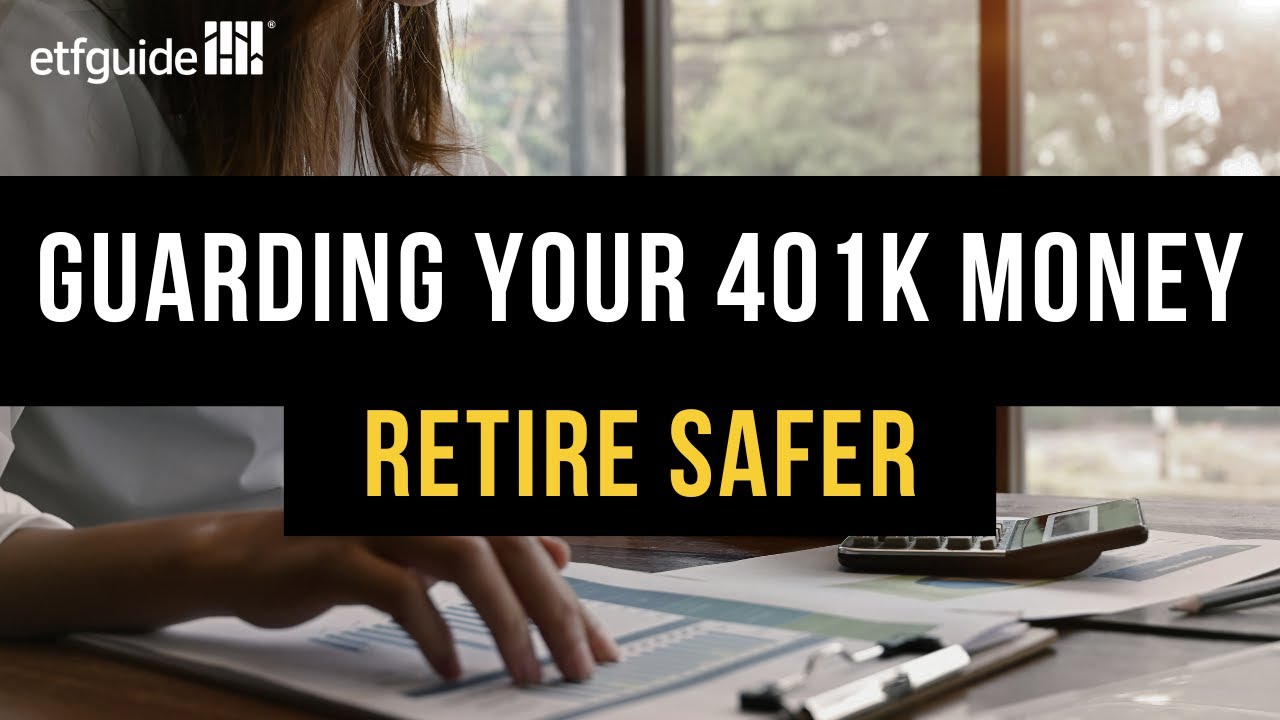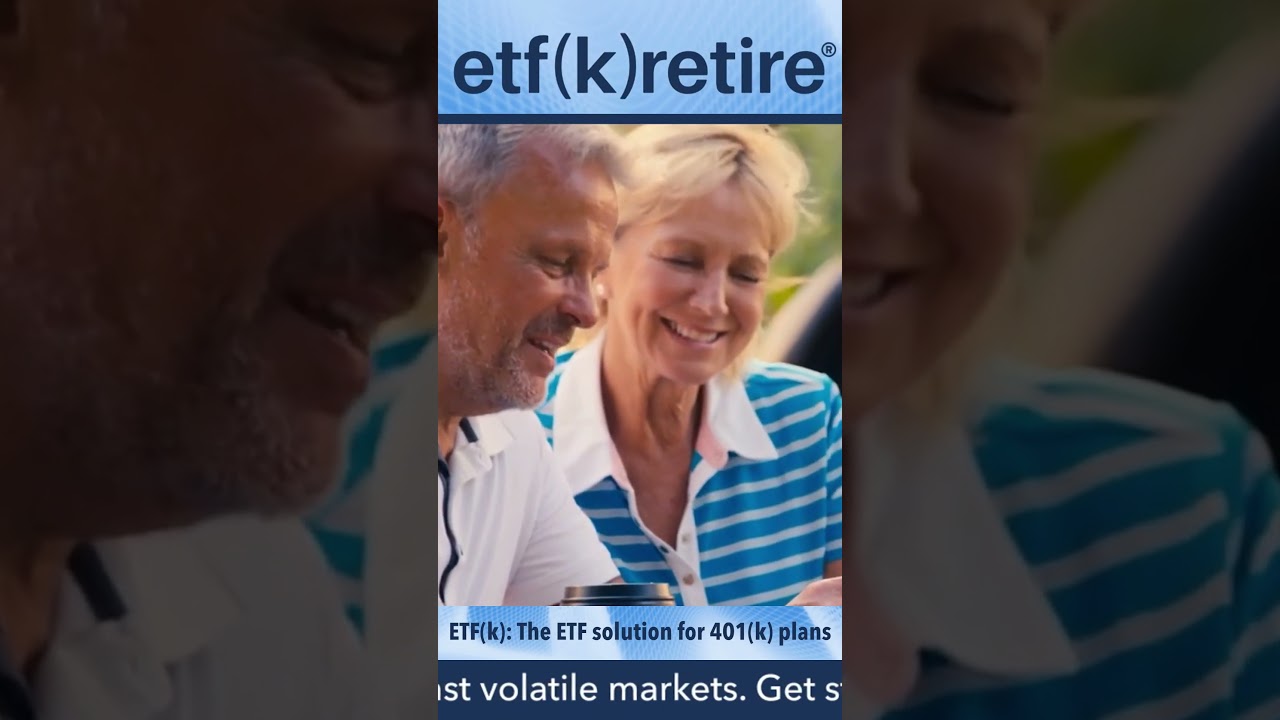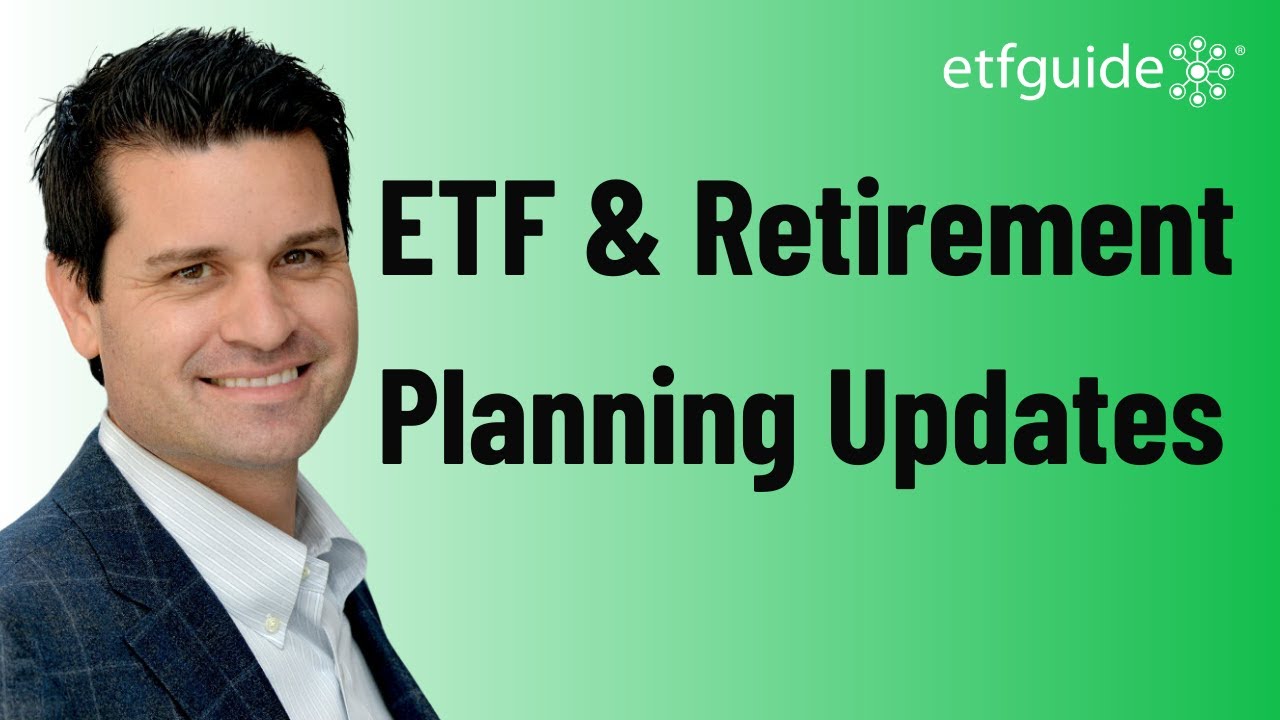Transcript: Jeffrey Becker, Jennison Associates Chair/CEO
The transcript from this week’s, MiB: Jeffrey Becker, Jennison Associates Chair/CEO, is below. You can stream and download our full conversation, including any podcast extras, on Apple Podcasts, Spotify, YouTube, and Bloomberg. All of our earlier podcasts on your favorite pod hosts can be found here. ~~~ 00:00:02 [Speaker Changed] Bloomberg Audio Studios,… Read More The post Transcript: Jeffrey Becker, Jennison Associates Chair/CEO appeared first on The Big Picture.

The transcript from this week’s, MiB: Jeffrey Becker, Jennison Associates Chair/CEO, is below.
You can stream and download our full conversation, including any podcast extras, on Apple Podcasts, Spotify, YouTube, and Bloomberg. All of our earlier podcasts on your favorite pod hosts can be found here.
~~~
00:00:02 [Speaker Changed] Bloomberg Audio Studios, podcasts, radio News. This is Masters in business with Barry Ritholtz on Bloomberg Radio
00:00:17 [Speaker Changed] This week on the podcast, Jeff Becker, chairman and CEO of Jenison Associates, they’re part of the PG Im family of Asset Managements. Jenison manages over $200 billion in assets. Jeff has really a fascinating background from Arthur Anderson to Aetna to Altas to ING. Eventually, he becomes CEO of Voya when the parent company spun out the US holdings into a separate entity, really an a, a fairly unique career path and is sort of uniquely situated to look at the world of investing. Jenison launched way back in 1969 as a growth equity shop. Their focus is on generating alpha with high conviction concentrated portfolios. They put up a damn good track record over the years. I thought this conversation was really interesting. There aren’t many people who have this sort of perspective and perch to see the world of investing from both an institutional and insurance based perspective and a long, long-term retail investment perspective. I thought this conversation was really interesting, and I think you will also, with no further ado, my conversation with Jenison Associates, Jeff Becker. So let’s start with your background. You get a bachelor’s in economics from Colgate and then an MBA in finance from NYU Stern. Sounds like you had been thinking about finance as a career right from the start.
00:02:02 [Speaker Changed] Quite the contrary, Barry. I had no idea what I wanted to do in college or coming outta college. I was a liberal arts major. My parents felt strongly about getting, you know, me a liberal arts degree and having me learn how to read and write effectively. And so that was the goal. I was an economics and English major. Econ was the closest thing you could get to business in, in some of those schools. And so, you know, that’s what I majored in. You know, I had no real guidance in terms of finance. Neither of my parents were in the financial industry. And so I did what most students did in those days, as you saw on the board, who was coming up to interview and, and potentially hire undergrads. And, and I saw that the, what were in those days, the big eight accounting firms were coming up to hire and they had this program where they would hire liberal arts graduates, have them work, and as part of the arrangement would pay for you to go to grad school. So it was a combined program through Arthur Anderson to go to NYU. And they were originally paying for a master’s in accounting, but ultimately everyone parlayed that into an MBA in finance. Huh,
00:03:12 [Speaker Changed] Really interesting. And did you end up at Arthur Anderson for any length of time?
00:03:16 [Speaker Changed] I did. I did. I ended up there for, for seven years. It was a, it was a terrific experience. It was a, a great company. You know, in those days these companies hired, you know, crops of undergrads. They, they trained them together. We learned everything, you know, across from accounting to auditing to, to tax and valuation. I ended up in what was called the valuation services group, where we valued real estate and businesses either for transactions or for m and a activity. And it was a, a terrific company, a great learning experience. They sent you out to clients very early on in your career, and you also got people management skills pretty early on.
00:03:55 [Speaker Changed] So learning to value real estate, learning to value companies, sounds like you’re going into private equity and private credit down the road like that seems to be the path these days. What was that experience like and how did it affect how you look at investments today?
00:04:15 [Speaker Changed] You would’ve thought that I didn’t know what private equity or private credit really was at the time. I had started to shift more and more into real estate. The background of tearing apart financial statements and balance sheets and discounted cash flow analysis was a great foundation really for anything in you do in finance ultimately. So it was a great experience in, in that regard. But I was starting more and more to specialize in real estate. And as a result, I got hired away by one of Anderson’s clients, which was Aetna. And Aetna had a very large commercial real estate business. As you, as you may recall, the insurance companies had huge commercial loan portfolios in those days that they were using to backstop long dated life insurance liabilities. It seemed like the perfect match of asset and liabilities until real estate valuations bottomed out. And the life companies ended up with a whole bunch of mortgage loans that, that were underwater. That led to a terrific experience for me being part of the workout of all of those loans in the early nineties. So we did foreclosures, we did restructurings, we did equity kickers, and we pulled up some of these loans into CMBS deals and sold them, sold them through Wall Street. It was really a terrific experience and really bred out of a crisis.
00:05:36 [Speaker Changed] And I just wanna emphasize, we’re not talking the beginning of the pandemic in 2020. We’re not talking about the financial crisis in oh 8, 0 9. You’re talking about really the post SNL crisis, late eighties, early nineties, where a ton of commercial real estate suddenly took a big hit. Eventually you become Chief credit officer covering real estate at Aetna. Tell us a little bit about that.
00:06:02 [Speaker Changed] Yeah, I was, I was part of, you know, the, the management that ultimately had to determine, you know, the valuation and, and the, the credit approval of the different transactions that we were working on, whether that was originally putting out new mortgage loans and determining whether it was a, you know, a good credit for, for the insurance company capital, or when we got into the restructuring period, it was about was this the right deal? Was were these the right terms, you know, for us as we, as we tried to salvage the portfolio.
00:06:32 [Speaker Changed] And then following Aetna, you end up at Altus Investment Manager, your, your CFO there. What was that like going from analyzing credit to being chief financial officer for an investment firm?
00:06:46 [Speaker Changed] Well, one of the things we were doing by working out the, the troubled mortgage loan book at Aetna is we were also working ourselves out of a job. So the job was to wind down the portfolio, and we were actually given retention agreements that were two years in duration. And at the end, we essentially were out of jobs. That was a little bit scary for an early career endeavor, but by the same token, it was the first time in my life I ever saw a six figure payment come at one time. And it was, it was quite, quite rewarding at an early stage in my career. So I knew I was gonna be out of a job. Aetna was up in, in Hartford, Connecticut. So I was up there alone as a, as a, as a young man. And I went to the head of HR at Aetna and I said, this has been a terrific experience, but my, my gig is up and I’m probably gonna head back to New York City.
00:07:40 Is there anything that I should look at within Aetna? She happened to be a Colgate grad, took an interest in in me as a Colgate grad, and said, yeah, we’ve got this great little third party institutional investment manager named Altus Investment Management. It runs pretty independently, has about a hundred billion in assets I’m gonna send you over there to meet the young dynamic CEO there, a guy named John Kim. So I went over and met John, we had a, a terrific three hour conversation, and at the end of the conversation he said, you’re hired. And I said, I’m hired, what am I gonna do? And he said, I don’t know, we’ll figure it out, but I think you’re gonna be CFO. And I said, well, I know Arthur Anderson is on my resume, but I I actually have never practiced accounting, and so I’m not sure that’s the right role for me. And he said, well, we’ve got a really strong finance team and a good strong controller. I want you to be a more strategic CFO, I want you to work on structured deals, m and a, you know, levers of profitability. And so that turned into a CFO role, which again, is a, is a terrific experience for anything you do. Really understanding how businesses make money and the levers of profitability is, is, is, is a great experience. Huh.
00:08:50 [Speaker Changed] So how do you go from Altus to ING investing management? What, what was that transition like?
00:08:57 [Speaker Changed] Well, in 2003, ING acquired Aetna’s financial businesses, and that was the life insurance, retirement and asset management businesses. And so Altus went along with that, with that acquisition. ING had been on a buying spree around the world and in the US buying up insurers and, and other businesses. And had ultimately ended up with about six asset managers, brands that are now all gone. Altus. The one I came to the party with, Pilgrim Furman sells Lexington Partners, Relias Star Research, the original ING investment management. But, but ING did not wanna see these run as, as boutiques ultimately in the long run, ING had a very integrated model, a mono brand approach to the world, and wanted to bring all these asset managers together. So I was selected to help lead the integration of these asset managers, which was, which was an interesting project. Each of these asset managers had A-A-C-E-O.
00:10:01 These boutiques were pretty fiercely independent, and it was a bit of a bumpy ride as we, as we brought them together. But ultimately, we, we did, we, you know, we started out in some cases with four small cap equity teams. And, and in, in some instances we selected one and not the others. And others, we instances we might have combined teams. And in other instances, we started all over. So it was a, you know, a multi-year project to, to really bring all of what were the acquired asset managers into one integrated ING investment management. And ultimately, I, I was the CFO of that initially. And then later the COO, the CEO at the time came to me and said, you did a terrific job on the integration project. You can be cce, CFO or COO, which one do you choose? And I said, well, can I be both? And, and he said, no, I can’t do that right now, so you have to pick one. And, and I chose CFO and my rationale was the CF o’s always at the head table because there’s always a financial implication to everything you do. So that’s, that’s where I started. But ultimately did become COO as well,
00:11:12 [Speaker Changed] Eventually, ING changes its name to Voya and everything is now branded Voya that were either these other pieces or ING and you rise to the role of CEO. How did that come about and what was it like going from COO and CFO to CEO?
00:11:32 [Speaker Changed] Yeah, it, it happened because of another crisis In 2008, the, the great financial crisis ING had had gotten overexposed in, in, in mortgages and had to take a loan from the Dutch state to shore up their tier one capital ratios. And as part of that deal with the Dutch government, ING agreed to sell off the US properties. If you can re remember back to the start of the financial crisis, it was viewed as largely a US issue. And so I think there was a desire to, to shed the businesses that, you know, where the, where the subprime mortgage bubble had had burst ultimately. And so I was, I was, you know, working for the head of ING investment management, but when ING decided to take this loan, there was a change in leadership. And, and my boss became head of ING Americas all of the insurance, retirement, and life businesses.
00:12:26 And I became CEO of ING investment management, which later became Voya. The way I found out that I was becoming CEO of I-N-G-I-M was a, was a bit of an interesting story. I was coaching my son at a U 12 hockey tournament up in the northeast, and my cell phone kept ringing while I was on the bench yelling at kids to skate harder and get into the, get into the corners, and it kept ringing. And it was my boss, and it was a Sunday, and eventually in between periods, I picked it up and, and, and it was, my boss at the time was a gentleman named Rob Leary, terrific mentor of mine who said, I, I need you to get down to my house tonight. I said, Rob, I’m up in the Boston area. He lived in Greenwich, Connecticut. And he said, no, you, you have to be here.
00:13:15 And I said, am I fired? And ’cause if so, I’m not coming down, just tell me now I’m gonna finish the game. And he said, no, you’re not fired, but you have to get down here. So I made my way down to Greenwich, Connecticut, and I proceeded to learn that ING had taken the loan from the Dutch state, and that in the morning before we woke up, because Europe’s ahead, it was going to go public and my boss would become the CEO of the Americas, and I would become the CEO of the investment management firm. And we, we planned what was gonna happen the next morning. I was gonna have to assure our investment teams, our clients, our, our pension consulting partners, that everything was gonna be okay, and, and that we were, you know, we were still in business, but as you can imagine, it’s incredibly hard to run an asset manager with a for sale sign on, on your back because ING had announced that it would dispose of the US businesses. So another crisis br opportunity for me, I had to actually tell my team of peers that I was now their boss because it was so chaotic that no one came in to actually deliver that message. I had to deliver it myself. But it was a great team and we, we, we rallied together and we, we built the business, grew, grew it coming out of the financial crisis, and then that ultimately became the business that we spun out as Voya.
00:14:37 [Speaker Changed] So, two questions that I, first, I have to get the date of this, like, was this right in the middle of the crisis? Was it towards the tail end? When did you get this Sunday hockey phone call?
00:14:50 [Speaker Changed] Yeah, it was about the middle of 2009. So 2008, you know, as you remember, Barry fourth quarter was chaotic. Sure. We were having global calls trying to preserve capital, who knew what was failing next. And then as we got into 2009, companies were starting to sort out, you know, where they were. And that’s, and it was about mid 2009 where ING decided to take, take the state aid.
00:15:13 [Speaker Changed] But, but the second question is, he couldn’t have told you that over the phone. Like, I know they want everybody in the room when you’re planning, but no, no, this is good news. You’re getting a promotion, get down here. It’s important. Had had a, that’s a stressful drive from Boston to Greenwich. It,
00:15:29 [Speaker Changed] It, it was, I think he was being extra cautious given it that it was material non-public information and, and pretty significant information Gotcha. At, at that. And, and also we needed to be up and running in New York Monday morning and, and so he needed to make sure I was down Sunday night. Gotcha.
00:15:46 [Speaker Changed] That, that’s really, that’s really quite fascinating. How did you end up going from Voya to Jenison Associates? What drew you there? Yeah,
00:15:55 [Speaker Changed] I wasn’t necessarily looking for a new role. I was enjoying enjoying the role at Voya, being CEO of the asset manager. I was on the executive committee. I was learning new skills, being part of quarterly earnings calls and, and, and, you know, helping grow that business as part of a new company and new brand. But at the same time, I was probably deep down ready for a change. I had been with the company for 20 years, but really it had changed around me from Altus to Aetna to, to ING and, and then Voya. And so I was ready for a change. I, I said that to myself that if I left, it would not be for another insurance or bank owned asset manager. And no disrespect to those, those businesses, I had terrific experiences and opportunities presented to me there, but I just felt that, you know, a a a new experience, maybe going back to something more independent or private would, would be the, would be the move for me.
00:16:57 But I got the call and from a recruiter, and Jenison was an intriguing company to me. It’s, you know, just well-known quality firm, strong results, impressive client roster. And I’d heard it had a great culture. So I, I was intrigued and, and, and agreed to have, have some meetings and, and really, really got quite interested in, in, in the business. I thought the people were, were outstanding that I met. They, they validated the culture, the client list and roster truly was impressive. What, you know, what I had to get my head around is that it, it was owned by an insurance company, however, part of p GM’s multi boutique model, and that was, that was very appealing to me. I think for this stage of the asset management industry, a multi boutique model is a, is a good model. You get the asset class specialization, you get the entrepreneurialism in the boutique, but you get the benefit of being part of a larger manager that has access to wealth management platforms, capital, global distribution. So it, it seemed like a very good business model that that allowed for sort of the best of both worlds and, and, you know, I was therefore attracted to it and, and really have not regretted the move one bit.
00:18:19 [Speaker Changed] Hmm. Really interesting. Talk a little bit about Jenison. You mentioned they had been around a while, 1969, they’ve been around for, let’s call it 50 plus almost 60 years. What sort of traditions and cultures made that longevity so attractive to you?
00:18:39 [Speaker Changed] Yeah, it, it was, it was all around reputation and, and the history is that, that Jenison founded in 1969 was really one of the first independent institutional asset managers in those days. All the institutional asset management was done out of the banks. And there were seven founders who decided that maybe they could do it better. And they, they left their banks and they set up a business in the, in the Drake hotel in, in New York City. And they started to, they started to invest. They, they ultimately were growth investors, but growth investing was not even known at the time. You know, the Russell 1000 growth didn’t even exist, but the team started investing in what they believed to be the fastest growing companies, the disruptors of the time, and really became, therefore one of the earliest true growth investors and the founder that, that, that survived the, the, you know, almost the entirety of, of the business and, and was there when I arrived was Sig Sal, who was an iconic investor, again, really one of the first dedicated growth investors.
00:19:43 He was an incredible investor, but also an incredible man. He worked right up until he passed two years ago at 89 Wow. Liter, literally until the week before. He was never going to retire. He, you know, he, he was someone who who taught me a lot. He taught the firm a lot, but at the end of the day, he was an, an intense competitor who wanted to win, but he was very values based. Everything was about the client and, and about values. And he had a great saying, which was do what’s right for clients and that’ll always be right for the business. And I think those are pretty, pretty sage words. And if, if you’re serving your clients well, you’re gonna both retain and, and get, get new clients. And in, and in fact, if you look at our, you know, our client roster, two thirds of our clients have been with us for more than 10 years and 40% more than 20 years. Wow.
00:20:35 [Speaker Changed] That, that’s pretty substantial. I’m kind of intrigued by the concept, and I, I mean, I was a kid in 1969, I think I was seven or eight years old, but the idea that growth investing was like a novel concept. I get the, the idea that, hey, this was kind of the early days of a bear market that that went on for another decade. But tell us, what does it mean to be growth oriented investors when there’s no such thing as a typical growth index or a value index? 00:21:13 [Speaker Changed] You know, what growth investing has meant for Jenison, and it is, it is the original legacy and, and original book of business for the firm we’ve extended from there. But growth investing for us has really been about high conviction, deep fundamental research driven, active manage management. And you know, we’re a, we’re a concentrated manager. We take, we take large positions in, in, in concentrated portfolios, and we’re really striving to be that high alpha equity manager for, for pension plans and for wealth allocators. And often we’re part of an asset allocation and, you know, we’re, you know, we’re the alpha in the corners, if you will. And, you know, I think that’s the right place to play as a fundamental active equity manager because the hollow’s been middled because the middle has been hollowed out. And, you know, at the end of the day, no, no one’s gonna pay active management fees for two to three tracking error equity.
00:22:10 [Speaker Changed] Huh, that makes a lot of sense. So I, I gotta ask two questions about concentration and deep conviction. First, what is a concentrated portfolio? I, I’ve seen a lot of people describe themselves as concentrated portfolios and their 50, 60, a hundred holdings. It doesn’t really seem concentrated. What does concentrated mean to you?
00:22:32 [Speaker Changed] Yeah, for us, 50 60 would be the largest portfolios that, that we manage in our, in our growth book of business. We do have down in our small cap and SMID cap of book of business. We do have larger holdings down there just to get some more liquidity and diversification. But for our, our core franchise of, of growth portfolios, you know, we have 10 stock portfolios, we have 20 stock portfolios. When we say something’s focused, it tends to be about 30. And, and for us, you know, flagship might be up to 50, but not, not typically more than that.
00:23:07 [Speaker Changed] And so when you say deep conviction, what does deep conviction mean? Is that what leads to these 10 stock or 20 stock concentrated portfolios? Tell us a little bit of what does deep conviction mean?
00:23:20 [Speaker Changed] Well, I think it starts with our, our investment research. You know, we’re a firm of 400 people, 70 investment professionals, about half PMs and half analysts. They have very long tenures with, with the firm, about 30 years of experience in the industry, more than 15 on average with the firm. And, you know, they are doing very deep research by teams. So every team, our, our large cap growth team, our global growth team, our small SMID mid team, our value team and our fixed income team all have dedicated research analysts. So there’s no central research model, there’s no house view, there’s no, you know, mandated approach to seeking Alpha. Every team has the, has the ability to seek alpha in its own way. And what we have are very long tenured experienced career analysts. So our analysts and our firm are as important as our portfolio managers.
00:24:18 It’s not necessarily as track to portfolio management. In fact, we believe, you know, the real secret sauce to, to Jenison is the research that, that we do and what the teams do. And on the growth side, at, at the end of the day, what we’re looking for is innovative and disruptive businesses driving structural shifts in industries, you know, business models with, with significant barriers to entry, secular demand trends driven by superior product offerings. And these days, you know, as you know, that might be EVs, autonomous driving, machine learning, obesity, drugs or luxury that’s owned through the value chain. And all of those tend to be superior growers. They tend to have moats around them and, and are the, the leaders and the disruptors. And, and you know, as you know, Barry history has shown that market returns over time have been driven by a narrow set of disruptors and consistent winners. And Jenison has developed a reputation for identifying those companies.
00:25:18 [Speaker Changed] So the past 15 years, those innovators, disruptors, companies with moats have primarily been US based. Right. And we see the rest of the world, Asia, Japan, Europe primarily lagging the us although there seems to be a lot of signs these days that that’s starting to change. Certainly Q1, 2025 Europe is dramatically outperforming the us. How do you think about the relationship between US investing and international investing? I know only about 10 or 15% of your assets are invested overseas. What, what would it take to make that change?
00:26:03 [Speaker Changed] Yeah. In terms of our, our portfolios that are invested overseas, and then I’ll, and then I’ll answer your question about how do I think about international versus US markets. We have a, a about 25 billion of dedicated international and global portfolios. But within our other equity portfolios across the firm, we do hold a percentage of international assets. So that, that number ultimately is about 40 billion of our 150 billion of equity. So it is a, a little larger than it, than it may, may appear. Gotcha. And you know, at the end of the day, un unless we have investment guidelines or restrictions from clients, you know, we seek alpha with a bit of ag agnosticism to both the benchmark and the region. So we are building portfolios, bottoms up, company by company and looking for what we, you know, view are the best companies for our strategy, whether that be intrinsic value.
00:26:57 And, you know, what we think are, are undervalued companies or the disruptors and, and the growers in terms of international holdings, per se, as you mentioned, the, the first quarter after a long drought of underperformance compared to the US international equities have had a, had a nice run. You know, it’s primarily driven by policy shifts locally in some of those regions as well as reactions to current US policy shifts and the uncertainty around that. So in Asia, you know, the, the government is clearly priming the pump in, in Europe, increased defense spending has, has really ignited, ignited the, the markets over there. And so I think the international markets might have some legs. We do still favor the us you know, in in the medium term and, and longer term right now. But, but certainly international markets after being beaten down for, for years have have come back strongly.
00:27:56 [Speaker Changed] So let’s talk a little bit about risk management. I know you guys employ the traditional sector, diversification, geographic diversification, different strategies. But talk a little bit about your risk management and the downside protection you deploy to make sure that volatility like we’ve been seeing doesn’t hit the bottom line too hard.
00:28:19 [Speaker Changed] Yeah, and, and you know, as we discussed Barry, we, we are concentrated managers, high conviction managers, so, you know, we’re paid to take risk and as a result, our portfolios do tend to be more volatile than the benchmarks certainly, and, and many other managers who are more diversified. So, you know, we will have periods where we wildly outperform the benchmark and periods where we underperform the benchmark, we’re looking typically at a holding period in our names of, you know, three to five years and much longer. And so, you know, we are long-term investors. We, we wanna align interests with our clients who are long-term investors and try to filter out the quarter to quarter noise and the volatility that that comes in, in between those periods. So again, if we can identify those companies early that are gonna be the longer term winners, that’s, that’s where we go from a risk perspective. What we want to protect against is unintended risk. So we are taking very deliberate and, and concentrated risk, but we have every kind of risk management report that you would expect in an asset manager to make sure we don’t have unintended risks to check our dispersion and to make sure that at the end of the day, the risks we’re taking our stock selection risk and not unintended risk around, you know, size, geography, sector.
00:29:41 [Speaker Changed] So I don’t usually hear the phrase unintended risk. So I, I certainly understand the risk of performance relative to a benchmark. You’re gonna over underperform, you’re gonna outperform. What are some other unintended risks? Is it strictly just sector concentration, a geographic concentration, or is there a little more nuance to it?
00:30:03 [Speaker Changed] We wanna make sure at the, at the end of the day that the risk we’re taking is, is stock specific. That’s, that’s who we are on the equity side. We are, we are stock pickers. And so we wanna make sure that, you know, what’s, what’s coming through our portfolio from a risk perspective is all based on stock selection and not some of the more factor based influences that can, that can take shape in portfolios. And as you mentioned, you know, sector and geography and, and, and other exposures. Hmm.
00:30:34 [Speaker Changed] Really interesting. So, so given that PGIM is the parent company and they run a a, a sort of multi boutique, multi-strategy approach, how does your concentrated alpha approach to investing fit in are, do you have to think about, well maybe this group or that group is doing something sep similar or do you do your thing and it’s up to the parent company to select the allocation they want?
00:31:04 [Speaker Changed] Yeah, the great thing about the multi-manager model at PG Im is each of the affiliates, as we call them versus boutiques, are free to, to pursue their asset class and their specialty in their own way. Now, to the extent that there are multi-asset portfolios put together, you know, within PGIM that might select components of the different affiliates or boutiques, you know, that’ll be determined by the multi-asset team doing the asset allocation. You know, for, for Jenison given, you know, the high highly concentrated, you know, nature of our, of our equity portfolios, we fit into some of those multi-asset products, but in other cases we don’t. We’re too high octane for that. But we are in a number of annuity and, and other asset allocation products throughout Prudential that, that avail themselves of, of our various capabilities. And the other thing that, that, that Jenison can do is we have a small quantitative equity team, not to be confused with PGIM quantitative services, which is a, a sister company. 00:32:13 Our team is there to customize our fundamental alpha from our equity portfolios. So if a client is looking for a targeted tracking error, a targeted volatility, you know, likes what we do, but maybe can’t quite, you know, take, take the tracking error of volatility, we can manipulate the portfolio to fit within their requirements. They might be someone who wants a sustainable portfolio and, and, you know, has some exclusions or types of industries they, they don’t want to include. So having this little quant group within Jenison to customize our, our outcomes for our clients has, has been a, a, a terrific addition of value that has allowed us to get into some of these multi-asset products. The other great thing about the the PGM multi-manager model that I’ll comment on is that we have virtually no overlap among the different affiliates or boutiques. So Jenison is the, is the fundamental active equity manager, you know, PGM quantitative services is the quant manager, PGM fixed income has, you know, broad based fixed income capabilities. We have private real estate, private credit, et cetera. And we’re not fighting with each other over shelf space in different products because we’re all experts in, in what we do 00:33:29 [Speaker Changed] Now, it’s taken me about 10 years to stop saying Prudential and start saying p Im, you did mention Prudential. When you think about the parent company, it traces back to Prudential Insurance, which is still a giant brand. How does the relationship between Genesis, how does the relationship between Gene and p IM and PE Prudential just affect the nomenclature? It’s a lot of stuff to keep, keep straight.
00:33:58 [Speaker Changed] It is, you have, you have the master brand of Prudential 150 years. You have the PE GM brand of a little over a decade old, and then you have the brands underneath Jenison at, at 55 years being the oldest of, of, of the investment management brands. It’s also why Jenison tends to be the most independent of the, of the affiliates or boutiques. It was an acquired business, about 75% of the assets were sourced by Jenison versus assets that, that have come through some of the Prudential or or PGM channels. But, you know, we do, you know, we do have to be careful about the branding and sometimes it’s at the product level. For example, PGM runs a lot of the, you know, the, the consolidated platforms like the, the mutual fund platform. And in Europe, the, the, the USIP platform that, that are, you know, used to, to structure the funds that are sold into the wealth management channels. And there, for example, if you wanna buy Jenison in a growth fund through the, through the PGM mutual fund company, it’s the PGM Jenison Growth Fund. Huh. So sometimes we have multiple brands at play.
00:35:13 [Speaker Changed] Huh, really interesting. So let’s talk a little bit about the current environment. It certainly has been a chaotic first quarter with tariffs on and off. Again, you guys are deep fundamental investors. How do you think about news flow and all this noisy stuff? When you’re looking at the fundamentals of companies?
00:35:39 [Speaker Changed] It’s, it’s hard to do, but it, it really comes down to, to focus. At the end of the day, we have to try to filter out the noise. Now we can’t, we’re we’re not macro investors, but we have to be macro aware. We have to understand if policy shifts or, you know, anything in the macro environment will ultimately affect the environment in which our companies operate. So we, we always bring it back to the fundamentals. You know, we can’t put blinders on and say this is a great company, but if, if the landscape in which they operate changes, it can affect the fundamentals of the company. So, you know, we work very hard to try to separate the, you know, the noise from the fundamentals. But at the end of the day, sometimes that that macro environment can affect the fundamentals.
00:36:24 [Speaker Changed] So when it starts affecting the fundamentals, how, how do you manage it? I’m assuming since you’re the alpha managers, you don’t have an option of saying, we are gonna go to cash or we’re gonna go to bonds. Is it a matter of saying, Hey, Europe seems to be doing better, we’re gonna rotate shift some of our exposure from the US to overseas? How, how do you deal with the macro once it starts affecting the fundamentals? 00:36:50 [Speaker Changed] Yeah, it’s, it’s exactly as, as, as you described, we’re, we’re paid to invest in a certain strategy for a client. So we, we hold very little cash just, just for liquidity and trading. We’re, we’re paid to be fully invested. And so, you know, as we see either a sector or a supply chain or a company’s fundamentals coming under pressure will, will either underweight or, or get out of the, the company completely and look for the next best opportunity.
00:37:16 [Speaker Changed] Really kind of interesting. You had a piece recently at Jenison titled is Value Investing Debt. Tell us a little bit about that.
00:37:26 [Speaker Changed] Yeah, well, well, growth index indexes have, have certainly outperformed value for, for well over a decade. I think we’re all aware of that. That’s, that’s been good for Jenison. Two thirds of our equity assets are, are growth oriented assets and, and we’ve, we’ve benefited during this period and also outperformed and, and, and raised money in new clients. So, you know, a lot of that has been, has been a great tailwind for our business. But we also have a, a high performing value team that’s, that’s put up some very good numbers. The way we, the way we manage in, in value is, is called an intrinsic value approach, which is very opportunistic. It’s not deep value or a fallen angel type strategy. We look for companies with temporarily depressed earnings versus a permanent situation. We try to identify those and periods of short-term volatility can actually favor our approach if we can, if we can decipher, you know, which companies have hit an inflection point and get into those early and hold them long term. Now the market has broadened out recently from the Mag seven and some of the, you know, the, the most concentrated positions that have, that have led the market and, and we’re being rewarded, you know, for executing in, in the value space. There’s still good companies and good growth in value. I don’t think investors really think about growth versus value investing like they used to. I think they think about it as portions of the portfolio stable growers maybe with dividends versus innovators and disruptors that, that might lead the way in the future.
00:39:03 [Speaker Changed] Huh. That’s really, that’s really kind of interesting. It, it’s funny because you, you were talking about your approach to intrinsic value and I would imagine that as the Mag seven and traditional growth equity falters, the volatility of this market would be great for an opportunistic intrinsic value investor. Tell us how the value guys are salivating these days over, over what the state of markets are with volatility spiking up close to 30.
00:39:40 [Speaker Changed] Yeah, I think volatility actually can be good on the growth side as well. So I think, oh really, I think when you’re a a fundamental stock picker, you, you want number one as, as little correlation as possible. If everything goes up, it’s hard to differentiate yourself when markets broaden out. You know, when, when volatility is, is, is elevated, you know, it really, you really have to have skill to, to differentiate and to separate the noise, you know, from the fundamentals of the company. And so we think we can benefit in these periods both on the, the value and the growth side. Certainly, you know, on the growth side has pulled back most recently in, in the first quarter, you’re, you’re starting to see that shift back already. It appears that mid-March was perhaps the, you know, the, the, you know, the bottom and we seem to be, you know, starting to bounce off of that. I, I for one, don’t, don’t see a recession on the horizon at at least not a, not a severe one. So I think we will continue to see as, as you know, we filter through the noise, we learn that tariffs may be a little more targeted and forgiven in some instances that the supply chains don’t get as disrupted as, as we thought. And we could see a, a good period for, for growth equity again.
00:41:05 [Speaker Changed] So you have large cap growth equity as a focus, you have global equity opportunity. What are some of the other areas where, where you guys focus in terms of looking for alpha?
00:41:19 [Speaker Changed] Yeah, growth, growth equity as, as we’ve talked about was the foundation of the firm and, and the largest book of assets about half the assets of the firm. We have a, a global growth team that, that was built and extended off of that getting into global international and emerging market equity. Also following a a growth style and and philosophy. That team leverages a lot of the same research of our growth analysts. Then we have a, a small smid mid cap team. They’re a little more val growth managers, but a little more valuation sensitive there. And we offer that in, in sort of growth and core portfolios. Our value team, we talked about our intrinsic value capabilities, but you know, on the value side, we, we also have certain sector funds, infrastructure, utilities, energy and, and other things. And, and including some of some strategies that are in demand in Europe, like carbon solution strategy.
00:42:23 That’s a sort of a brown to green strategy, if you will. And then we have our $50 billion fixed income shop based up in Boston. They are really the antithesis of what we do in, in, in high conviction focused, concentrated equity. They are a high, high quality credit shop staying in, in, you know, the higher end of the space there, down the fairway core fixed income manager managing for the largest pension plans in in the world and also in stable value and LDI mandates. So it’s also a nice diversifier for the business. We have this very stable, you know, core credit manager and this high conviction, high alpha equity manager.
00:43:11 [Speaker Changed] So given that there seems to be a consensus at your shop of higher for longer, at least when it comes to rates, since you brought up fixed income and you brought up credit, does this allow your clients to say, Hey, we could take a little off the table with equity and focus a little more on, on stable fixed income. How, how, how does that balance work?
00:43:34 [Speaker Changed] Yeah, we’ve seen that over the last several years as, as, as rates ticked up and there was something to earn in fixed income. Again, we, we watch pension plans, you know, adjust their, their asset allocations. You know, one of the double-edged swords of of of being a high performing equity manager is when the equity markets run up and you outperform the benchmark you get allocated against, you’re the one they take the money away from. So, you know, we’ve, we’ve had that happen and, and have been a victim of our success, if you will, in some of these areas. So we have seen that over the last couple of years as rates ticked up where we did see some of our clients, you know, maintain us, but but shift some of 00:44:14 [Speaker Changed] That to sort of rebalance, rebalance from alpha generating concentrated equity into more stable, lower yielding fixed income.
00:44:23 [Speaker Changed] Exactly. Exactly. I mean, we, we do, you know, I’m not one to, to call rates per se, but you know, I I I agree with the base case out there that we’ll probably see two cuts, hopefully they’re, you know, they’re for the right reasons and not bad news cuts, if you will.
00:44:39 [Speaker Changed] So, so that’s interesting you say that because originally last year, wall Street was looking for a lot more cuts than we got and the, the sort of pushback to the expectation was, hey, the economy’s really robust, consumers are spending, companies are hiring CapEx, spending is up, revenue and profits are up. What, why are you guys expecting cuts? How does that transition now where, you know, I’m in your camp, I don’t really see an imminent recession, but at the same time it, it certainly appears that recession risks are ticking up. They’re still relatively low, but they’re appreciably higher than they were at the end of, of 2024. So if we’re gonna get two cuts, is that because the Fed wants to normalize rates to where they’ve been over the past 20, 25 years as as inflation sort of settles down? Or are we gonna see cuts because the economy is beginning to slow?
00:45:42 [Speaker Changed] Yeah, I, I agree with you completely. I, I, I hope it’s the former and, and, and not the latter. We are starting to see some signs of some potential slowing of growth. I do think we could see growth slow down from what it’s been, but,
00:45:56 [Speaker Changed] And it’s been red hot and it’s been for a good
00:45:58 [Speaker Changed] Couple of years and it’s been red hot. You know, there’s still some good signs out there. Housing starts are up, services, PMI is up, you know, retail sales and manufacturing are down, consumer sentiment’s down the income and labor markets importantly are still, are still decent. I think that’ll be a major determinant of, of where we go. Inflation is stubborn, but it’s, it’s showing signs of coming down in key areas, tariffs not withstanding. And, you know, I think the tariff path will, will determine a lot of where we go here.
00:46:29 [Speaker Changed] So it, it sounds like you guys stick to your knitting, you do fundamental research, you focus on intrinsic value, but you’re certainly aware that hey, what’s going on in the rest of the world, it could have an impact and bleed over. If you are advising pension funds or foundations that have a perpetual lifespan, or at least future liabilities that are decades off, is the best advice, Hey, it’s gonna get bumpy for a while, but you have to look past this, look to the other side of whatever happens over the next 1, 2, 4 years. Or is it everybody man, their battle stations?
00:47:10 [Speaker Changed] Yeah, I, I I think keeping a long-term focus is good advice, you know, for, for the pension plans who obviously have teams of experts, you know, focused on their asset allocation, but also for the retail investor who, who obviously has the financial advisor as well. But you know, as you know, Barry, staying invested is key. When people try to time the markets and, and exit, you know, they, they’ve, they’ve always regretted that, you know, being in the market during those key points of inflection when, when markets tick up or missing that that last, that last large spike, you know, really can have a, a dramatically negative impact on your returns overall.
00:47:55 [Speaker Changed] Yeah, we, we’ve seen a lot of studies that show the worst days and the best days tend to come clustered together and it’s very hard to miss one and, and catch the other.
00:48:04 [Speaker Changed] Absolutely.
00:48:04 [Speaker Changed] So I know I only have you for a, a limited amount of time. Let’s jump to our favorite questions that we ask all of our guests. Starting with what’s keeping you entertained these days? What are you either watching or listening to? What, what’s your, tell us about your favorite podcast, Netflix, whatever,
00:48:25 [Speaker Changed] You know, I’m always well behind where, where everyone else is. I didn’t watch the first episode of The Sopranos until, until the series was over. Oh
00:48:33 [Speaker Changed] Really?
00:48:34 [Speaker Changed] And I’m just starting Yellowstone. So that, that tells you how, how up to date
00:48:39 [Speaker Changed] I, you’re ahead of me in Yellowstone. It’s the next one up in my queue. Are you enjoying it?
00:48:45 [Speaker Changed] I just started it so, so far so good. I’ve heard so many great things about it. So I’m, I’m looking forward to it. I’m, I’m a bit of a history buff, so I’ve been working my way through the Ken Burns documentaries. I’ve seen the Brooklyn Bridge, the Statue of Liberty, the Civil War, the Vietnam War, and the Great War. And the next one up for me is Benjamin Franklin. So I really enjoy Ken Burns and, and how he approaches, you know, the the documentary,
00:49:13 [Speaker Changed] Huh. Really interesting. You, you mentioned one of your mentors previously. Tell us about the folks who helped shape your career. Who, who were your mentors?
00:49:24 [Speaker Changed] Yeah, I would say first, you know, it, it, it, it was my mother from a, a values and from a work ethic perspective, first generation college grad, went to, got a master’s at Georgetown, worked in politics, ran some nonprofits, and then ultimately worked in, in in education. She’s, she’s 90 years old and, and still alive and, and doing well. And, and you know, she’s been a great inspiration to me. Again, from a, from a values and and work ethic perspective. I’ve also had the, the, the great opportunity to, to work for some great leaders and, and managers. I tried to learn from each one of them along the way, take the, the, the styles or the characteristics that I most admired of each of them and try to incorporate that into my leadership style. At, at, at Altas, it was John Kim and Scott Fox at, at, you know, Bob Crispin, Rob Leary at at ING and then Alon, Kara Lin at, at Voya to name a few Sig Segal, who, who I mentioned past about two years ago.
00:50:26 I worked with him, him for only about six years. And while, you know, he wasn’t necessarily a mentor in the sense of helping me do my job, which was terrific. When, when, when I came on board, SIG said, I I manage the money, you manage the firm. And he, he kept his word there and allowed me to do what, what, you know, we felt we needed to do to help grow the business and set the strategy. And it was a, it was a terrific partnership and, and I have great admiration for him. So he was more an inspiration to me, just the, you know, his will to win and, and the way he impacted everyone around him and the quality and the values of the firm that he built. Really inspirational. Hmm.
00:51:06 [Speaker Changed] Real, really interesting. Let’s talk about books. What are you reading currently? What are some of your favorites?
00:51:13 [Speaker Changed] Yeah, right, right now I just started leadership in Turbulent Times from, from Doris Kearns Goodwin. It seems a little apropos Sure. Right now. And, and you know, it’s a, it’s a book about Lincoln, Teddy Roosevelt, FDR and, and LBJ. And it kind of, you know, takes you through their, you know, their administrations and, and some of the, the challenges that they faced. You know, it’s a big book. It, it’s sat on my coffee table for a few years and I looked at it and I, you know, I’ve wanted to kind of tap in, but it was four inches high. And, and finally, I, I did tap in and I’m glad I did.
00:51:51 [Speaker Changed] Our final two questions. What sort of advice would you give to a recent college grad interested in a career in either investment, credit, finance, anything along the lines of, of your career experiences?
00:52:07 [Speaker Changed] Yeah, I, I would say first thing you know, you know, getting into finance, the path to finance starts so much earlier than it ever did. And, and in our day, you know, it was senior year, it was time to look for a job. Maybe you had an internship, you know, the year before, but now undergrads going into finance, they need to be lining up their internships sophomore summer, junior summer, senior summer. So, so it really starts a lot sooner. But once they’re on the job, my, my advice to them is always build a, a resume of skills, not a resume of jobs. Try to, you know, try to develop as many skills as you can along the way and ask questions early and often. You’re not expected to know anything when, when you’re young and in the job, but as, as you move on in your career, you’re expected to know more and it becomes a little harder to, to ask questions and then ask for experiences outside of your current duties.
00:53:04 So if you see something going on in the, in the next department over, ask if you can be exposed to that, you know, while doing your, the job you were hired for and, and try to get more, more exposure. But don’t expect anything to be given to you. You own your career, seek out mentors and, and try to learn, but at the end of the day, you, you have to take ownership of your career and your advancement will really depend on the success of your current role. And if you focus on that and, and do it well, you’ll be recognized.
00:53:36 [Speaker Changed] Hmm. Really good, good advice. And our final question, what do you know about the world of investing today? You wish you knew 30, 40 years ago when you were first getting started?
00:53:47 [Speaker Changed] Well, as I mentioned, I didn’t know anything about it 40 years ago when I was getting started coming outta college. But, but in reflecting back, what I, what I think would be helpful would’ve been how many different types of finance careers there actually are. Everyone thinks sort of Wall Street investment banking m and a, but, but there’s investment management, there’s wealth management, there’s insurance, there’s commercial banking, there’s, you know, there’s institutional banking, so many, many careers in in finance in past that, that, that you can go down. I had a very narrow view of, of, of the investment world. And, you know, my journey really, you know, happened because of the next role that I got and the next role that I got. I didn’t have a plan per se. And I think, you know, I wish I knew more earlier on and I might have set a plan. The plan turned out okay and, and I’ve been happy with it. But you know, who knows what the path would’ve taken had I known a little more about it. Huh. 00:54:45 [Speaker Changed] Really interesting stuff. Jeff, thank you for being so generous with your time. We have been speaking with Jeff Becker, he’s chairman and CEO of Jenison Associates helping to run the firm that manages well over $200 billion in assets. If you enjoy this conversation, be sure to check out any of the 550 or so we’ve done over the past 11 years. You can find those at iTunes, Spotify, YouTube, Bloomberg, wherever you find your favorite podcasts. Be sure to check out my new book, how Not to Invest the ideas, numbers, and behaviors that destroy wealth and how to avoid them out Now at your favorite bookseller. I would be remiss if I did not thank the crack team that helps with these conversations together each week. My audio engineer is Steve Gonzalez. Anna Luke is my producer, Sean Russo is my researcher. Sage Bauman is the head of podcasts at Bloomberg. I’m Barry Ritholtz. You’ve been listening to Masters in Business on Bloomberg Radio.
~~~
The post Transcript: Jeffrey Becker, Jennison Associates Chair/CEO appeared first on The Big Picture.





